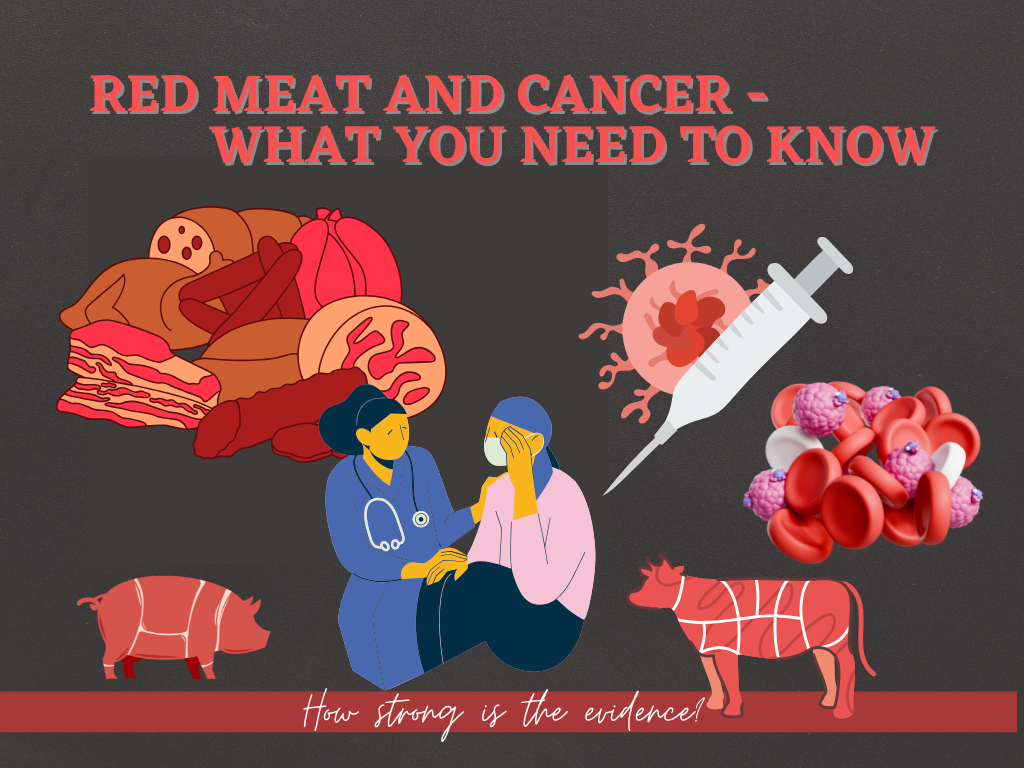Red meat refers to meat that comes from mammals, particularly those with a high concentration of myoglobin, a protein that stores oxygen and gives the meat its characteristic red color.
Examples of red meat include:
- Beef (from cattle)
- Pork (from pigs)
- Lamb (from sheep)
- Venison (from deer)
- Buffalo (from bison)
- Veal (from calves)
Red meat is typically high in protein, iron, and zinc, as well as other essential nutrients like vitamin B12 and omega-3 fatty acids.
There are different types of red meat, including:
-
1. Grass-fed
Meat from animals raised on a diet of grass and other forages.
-
2. Grain-fed
Meat from animals raised on a diet of grains, such as corn and soybeans.
-
3. Organic
Meat from animals raised without antibiotics, hormones, or pesticides.
-
4. Processed
Meat that has been preserved or transformed through smoking, curing, or other methods.
It’s worth noting that the World Health Organization (WHO) has classified processed meat, including some types of red meat, as a carcinogen, meaning that it may increase the risk of certain types of cancer. However, moderate consumption of red meat as part of a balanced diet is generally considered safe.
How Does Red Meat Predispose To Cancers:
The relationship between red meat consumption and cancer risk is complex, and there are several potential mechanisms by which red meat may increase cancer risk.
Here are some possible ways:
Chemical Carcinogens
-
1. Heterocyclic amines (HCAs)
Formed when amino acids and creatine react with heat during cooking, especially when cooking at high temperatures or charring meat.
-
2. Polycyclic aromatic hydrocarbons (PAHs)
Formed when fat drips onto hot coals or cooking surfaces, releasing smoke that contains PAHs.
Mutagenic Compounds
-
1. N-nitroso compounds
Formed in the stomach when nitrites and nitrates, commonly found in processed meats, combine with amino acids.
-
2. Advanced glycation end (AGE) products
Formed when protein or fat is cooked with sugar, leading to oxidative stress and inflammation.
Inflammation and Oxidative Stress
-
1. High-temperature cooking
Cooking at high temperatures can lead to the formation of pro-inflammatory compounds.
-
2. Heme iron
Red meat contains heme iron, which can catalyze oxidative reactions, leading to inflammation and DNA damage.
Gut Microbiome Alterations
-
1. Dietary fiber and gut microbiota
A diet low in fiber and high in red meat can alter the gut microbiome, leading to changes in the way the body processes and responds to carcinogens.
Insulin Resistance and Hormonal Imbalance
-
1. Insulin resistance
Consuming high amounts of red meat, particularly processed meat, may contribute to insulin resistance, which can increase cancer risk.
-
2. Hormonal imbalance
Red meat consumption has been linked to changes in hormone levels, including insulin-like growth factor-1 (IGF-1), which can promote cell growth and division.
It’s essential to note that the International Agency for Research on Cancer (IARC) has classified processed meat as “carcinogenic to humans” (Group 1) and red meat as “probably carcinogenic to humans” (Group 2A).
To reduce the potential cancer risk associated with red meat consumption:
1. Moderate consumption: Limit red meat consumption to 1-2 servings per week.
2. Choose lean cuts: Opt for leaner cuts of meat, such as sirloin or tenderloin.
3. Cook at lower temperatures: Cook meat at lower temperatures, such as stewing or braising, instead of grilling or frying.
4. Avoid charring: Avoid charring meat, as this can lead to the formation of HCAs and PAHs.
5. Increase fiber intake: Consume a balanced diet with plenty of fruits, vegetables, and whole grains to help maintain a healthy gut microbiome.
Share Post On:
Recent Posts
-
Technique of Incision and Drainage of Septal Hematoma/Septal Abscess
-
Upper Aerodigestive Tract Foreign Body Impaction
-
Incision and Drainage of Hematoma Auris
-
Rigid Bronchoscopy for Retrieval of Foreign Bodies in Children
-
Foreign Body Impaction in the Larynx, Trachea, and Bronchi
-
Leadership Position is a Tool, not a Trophy
-
Carcinoma of the Oropharynx
-
Peritonsillar Abscess
-
Ethics of Doctor-Patient Relationship
-
Doctor-Patient Relationship Case Scenarios
-
Asymmetrical Tonsils and Approach to Evaluation and Management
-
Nasal Polyposis
-
Rigid Oesophagoscopy and Complication
-
Anatomy of Oesophagus
-
Stridor, Snoring, Stertor And Wheezing: How They Compare
-
Temporomandibular Joint (TMJ)
-
Otoacoustic Emissions
-
Tympanometry
-
Functional Endoscopic Sinus Surgery (FESS)
-
Tracheostomy
-
Clinical Voice Test (CVT) for Hearing Loss
-
Acute Epiglottitis And Approach To Management
-
Synoptic Overview Of Nasopharyngeal Carcinoma
-
Prioritizing Support For People With Disabilities Over Unhealthy Competitions That Marginalise The Downtrodden
-
Otitic Barotrauma
-
Titbits of Informed Consent Process for a Medical or Surgical Procedure
-
Comprehensive Overview of Mpox (Monkeypox)
-
Overview Of Corrosive Ingestion - Acid & Alkalis, and Management Approach
Categories
Get in Touch
Read doctor-produced health and medical information written for you to make informed decisions about your health concerns.


